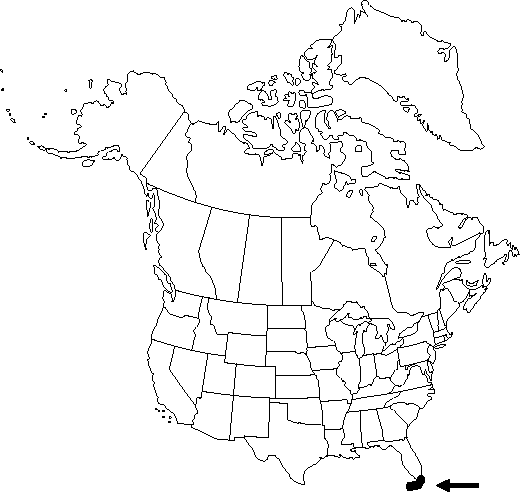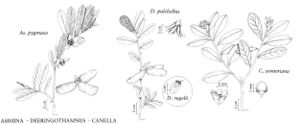Difference between revisions of "Canella winterana"
Fruct. Sem. Pl. 1: 373, plate 77, fig. 2. 1788.
FNA>Volume Importer |
FNA>Volume Importer |
||
| Line 34: | Line 34: | ||
|elevation=0-3 m | |elevation=0-3 m | ||
|distribution=Fla.;West Indies;ne South America. | |distribution=Fla.;West Indies;ne South America. | ||
| − | |discussion=<p>Although flowers of Canella winteriana are bisexual and protogynous (with the gynoecium of each flower functionally mature before the androecium), they are functionally unisexual, because normally all flowers on a plant are at the same stage (either male or female) at any given time (T. K. Wilson 1986). Canella winteriana is locally abundant in some areas, but with the clearing and development of the Florida Keys, it is becoming less common except in protected areas, such as Everglades National Park. Nurseries in extreme southern Florida occasionally market canella. It is an attractive, small- to medium-sized, very slow-growing tree.</p> | + | |discussion=<p>Although flowers of <i>Canella</i> winteriana are bisexual and protogynous (with the gynoecium of each flower functionally mature before the androecium), they are functionally unisexual, because normally all flowers on a plant are at the same stage (either male or female) at any given time (T. K. Wilson 1986). <i>Canella</i> winteriana is locally abundant in some areas, but with the clearing and development of the Florida Keys, it is becoming less common except in protected areas, such as Everglades National Park. Nurseries in extreme southern Florida occasionally market canella. It is an attractive, small- to medium-sized, very slow-growing tree.</p> |
|tables= | |tables= | ||
|references= | |references= | ||
| Line 58: | Line 58: | ||
|publication year=1788 | |publication year=1788 | ||
|special status=Selected by author to be illustrated | |special status=Selected by author to be illustrated | ||
| − | |source xml=https://jpend@bitbucket.org/aafc-mbb/fna-data-curation.git/src/ | + | |source xml=https://jpend@bitbucket.org/aafc-mbb/fna-data-curation.git/src/8f726806613d60c220dc4493de13607dd3150896/coarse_grained_fna_xml/V3/V3_866.xml |
|genus=Canella | |genus=Canella | ||
|species=Canella winterana | |species=Canella winterana | ||
Revision as of 17:20, 18 September 2019
Leaf blade 5-15 × 2-5cm, apex rounded or blunt; abaxial surface pellucid-dotted. Flowers ca. 7 mm diam., pedicel short; sepals green, 2-3 mm, fleshy; petals deep red to magenta, basally light red to yellow, 4.5-6 mm, thick and fleshy; anthers light red, becoming yellow at anthesis; stigma yellow. Seeds 1-5, black. 2n=28. [P. Goldblatt 1976]
Phenology: Flowering spring–summer (mid-May–Jul).
Habitat: Coastal thickets, hammocks, commonly found on limestone or calcareous soils
Elevation: 0-3 m
Distribution

Fla., West Indies, ne South America.
Discussion
Although flowers of Canella winteriana are bisexual and protogynous (with the gynoecium of each flower functionally mature before the androecium), they are functionally unisexual, because normally all flowers on a plant are at the same stage (either male or female) at any given time (T. K. Wilson 1986). Canella winteriana is locally abundant in some areas, but with the clearing and development of the Florida Keys, it is becoming less common except in protected areas, such as Everglades National Park. Nurseries in extreme southern Florida occasionally market canella. It is an attractive, small- to medium-sized, very slow-growing tree.
Selected References
None.
